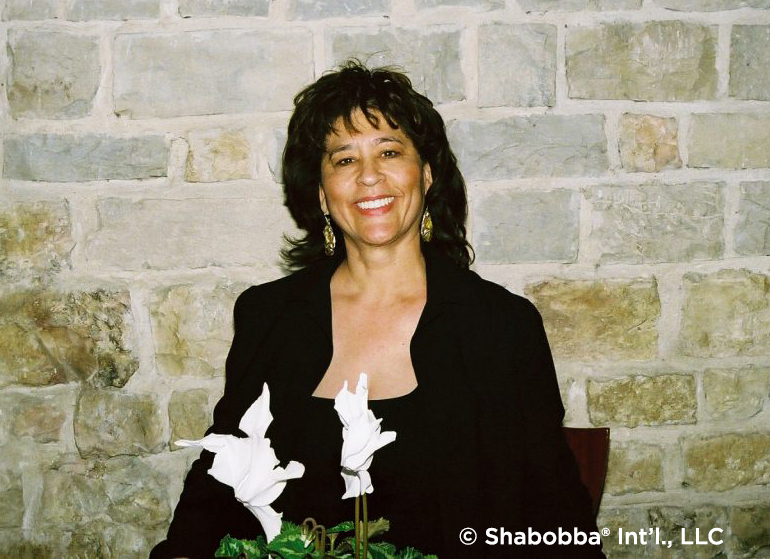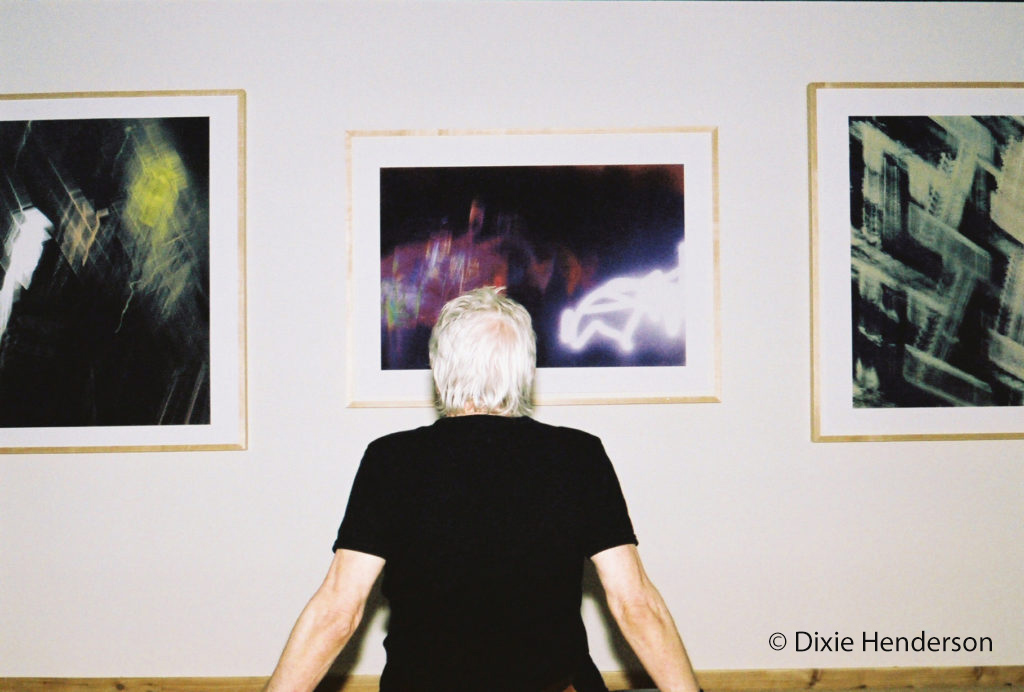Thank you for visiting our web site. Should you wish to know about Donald Greenhaus, artist/photographer and business partner, from my perspective, please continue to read the next few pages.
Otherwise, we hope that you will enjoy viewing Donald’s work, and reading the details about it. Should you be interested in any of his major series, please contact us regarding the availability of the work.
Sincerely,
Dixie Henderson
President, Shabobba® International, LLC

When Donald Greenhaus and I first started talking about “doin’ business,” i.e., establishing a business partnership, I made a confession. I confessed to him that I didn’t know how long it would take me to expand my knowledge on art history, and specifically gain knowledge on great photographers and their work.
Donald replied, “Oh, that’s easy. You don’t have to know about anybody’s art – just mine!” Further, he said, “And, if you want to know about my work, read what others have to say about it.”
He stuffed my arms with magazines, letters, and excerpts from publications, my e-mail box with attachments and pictures, and my doorway with packages of information left by overnight delivery services.
Donald lectured me, daily. I had lessons in art, photography, and just plain living. He spoke about fear, courage, talent, but mostly about his work. When I asked a question, he answered with a lecture. Because I wanted to learn, it was all the more exciting for him to teach. And, it was shear fun for me, too. I jumped at what he had to say, and even how he said it. Donald delivered his words like a maestro conducting the sea. The tone of this voice would rise and fall like the tides; his hands would gently point to areas of light coming from beneath the surface rather from above; and his body would become filled with massive energy. He could light up the world as he shared his newly perfected printing processes. I kept the jitters. It was the suspension. What new work would he produce? It was the excitement of anticipation. What would he say next? How would he say it? He was uncommonly witty. His intent was for me to grasp hold of what he was saying, no matter how he had to rephrase it. His wittiness served me well.
Overall, I admired his love for teaching, and his knack for working with young people. Frequently, I scheduled Donald to speak to youth, secondary and post-secondary levels, and at global career development conferences. The youngsters could not get their fill of what he had to say. I watched students’ faces brighten. They burst with the hope of having a career as fulfilling as the one that Donald had carved over the years.
This love affair wasn’t one-sided. Donald could not get his fill of the young folks. His face beamed when he mentioned a particularly talented student. For those especially ambitious, Donald mentored them in his loft, where he resided and worked in New York City. His voice resonated when he shared with me how this “kid,” or that “kid” was coming along. Frequently, Donald obtained release statements from students so that we could share their remarks from school papers with the public. These students attended various universities and colleges. One student’s opening comment was the following: “Donald Greenhaus is a touching, passionate and caring artist that will not hesitate to fly back [to New York City] for a day from a show [in Kansas City] to share his passion with students.” It’s true. His love for teaching, and bright students didn’t go unnoticed by students, teachers or colleagues. On-the-other-hand, he was quick to spot a pretentious student. Donald was likely to say, “Don’t bother coming back, man. You’re wasting my time.”
I admired the fact that Donald, seemingly, did not comprise his work or talents. Yet, he was a kind of guy who cared about helping others who wanted to learn about his craft. We were at a very large international conference. A woman asked Donald for some advice on how to take really good pictures. He took his attention from his meal to show her some techniques. I noticed Donald as he watched her take pictures amidst the extensive crowd. When she returned, the lady asked him for another tip. Donald was clearly upset. He replied, “I get paid to teach.” Donald admitted to me, “She didn’t do one thing that I told her to do. Why bother? She wasted my time.” He went back to his meal.
Donald had great respect for time. He loathed wasting it. I recall a particular incident – – – an attractive lady of means faked him to her company to discuss work for their corporate art collection. As it ended, he told her, “I am not for sale – my work is.” Donald was quick to state, “I don’t mince my words.”
No, Donald didn’t comprise his work, and he didn’t mince his words. He just gave, and gave, and gave of himself. He believed in the nobility of the human spirit. He taught in prisons, and drug programs. He labored against aids, homelessness, and workplace gender inequity. As I mentioned, he supported valid youth initiatives for better education. And when students felt that higher education had let them down, he was there for them. Here’s a plea for guidance from a graduating university student: “ Out of all the photographers I’ve seen speak and all the professors I’ve had, your views and interpretations of photography still stick out in my mind, which is probably why I’m writing this e-mail to you in the first place. I feel like I really need someone to talk to about where I’m going . . . so here I am, still standing at this crossroad…”
I am sure he helped more students than I can possibly ever know. I am sure he supported more humanitarian programs than I can name.
I do know that he waged against racial injustice. A silver gelatin print of his, A MEMORY FULFILLED, REMEMBRANCE OF EMMETT TILL, is one of his more compelling creations – – – Not that I don’t find all of his work compelling. But, we are addressing Donald’s activity as a civil rights’ activist, and his work associated with it. The intense image is only 9” high, but 47” long. Donald said that he was about 19 or 20 years old when he took these photographs. He was traveling down a Mississippi highway in the pitch of night.
When Donald first showed me A MEMORY FULFILLED, I remained silent. I studied it. As usual, I knew he was going to pop the questions: “What do you see? What do you feel? How does it move you?” Donald told me that it was his obligation to teach people how to see. Ultimately, it would be my responsibility as well. I began to become aware of my emotions, and searched for the right words to express them. I encouraged others to share their thoughts with me about a Greenhaus print. I pondered their reactions.
A MEMORY FULFILLED, REMEMBRANCE OF EMMETT TILL caused some gallery viewers to tear and turn away. A few seemed perplexed. They had no clue to what they were seeing. Sadly, some had never heard of Emmett Till. Once they left the gallery, they were, however, very much enlightened. I noticed others soaked up its beauty in respect of the noble and masterful work of Greenhaus; and, for the dignity of the youthful men – both Emmett Till and Donald Greenhaus.
As for me, A MEMORY FULFILLED, REMEMBRANCE OF EMMETT TILL captures the spirit and mixes an emotional truth serum – – – car lights glare in my eyes – head my way. Now, cones of light, twelve or more of them, blind me, come closer my way. Each travels on its own black path. They strike the broken lines in the highway, and turn from cones into shards of white light. They spear my soul. I dodge them. I run. I hide. I can’t escape them. I can’t ignore them and what happened in that tarred Mississippi night – A MEMORY FULFILLED, REMEMBRANCE OF EMMITT TILL by Donald Greenhaus.
A MEMORY FULFILLED embodies Donald’s composition in that it includes his “soft focus” technique. It amazes me to think that he took this image when he was yet in his teens, or barely out of them. He was a master at capturing, and delivering the light in his work; and, as he frequently stated, his work came from his very soul. I’ve chosen three grand individuals to help me express what this means. They are as follows:
Firstly, Victor Perez Esconlano, Professor, School of Architecture of Seville, Spain: The book, Sevilla Vista Por was presented to the Museum of Contemporary Art of Seville. Professor Escolano delivered a speech about Donald’s work at the presentation. The speech was printed in La Fundacion magazine, October 1994. In excerpt, here is what the professor said in respect to Donald and the light –
“Donald Greenhaus photographs semi-darkness, the aspect of dreams, in a time of human uncertainty . . . Light, shown in its absence, signals its presence. In the words of Cernuda in Ocnos – ‘If anything on this earth can attest to the existence of a divine power, it is light: and a remote instinct brings man to remember through light this divine possibility, although the fundamental rest that the light disseminates bring with it an equivalent profound anguish and death therefore appears as the absence of light.’”
Secondly, I’ve selected Alfred Steiglitz, photographer. Donald admired his work. I did not select Mr. Steiglitz merely for this reason, but for another. I brought the following passage to Donald’s attention. He asked me to send it to him. According to David Scott Milton in Organic Structure: Meditations on the Writer’s Art, Alfred Steiglitz once said: “You seem to assume that a photograph is one of a dozen or a hundred or maybe a million . . . But then along comes one print that really embodies something that you have to say that is subtle and elusive . . . a straight print, but when shown with a thousand mechanically made prints has something that the others don’t have. What is it that this print has? . . . It is something born out of spirit – and spirit is an intangible, while the mechanical is tangible. If a print that I might send did not have this intangible, what would be the value of sending it out?
If what I feel about life is not in a print of mine, then I might just as well say that any machine can take a picture and turn out a print mechanically. You might get wonderful pictures as a result, but they would not contain that something called love or passion, both of which are essentials needed to bring forth a living print – or any other living creative expression. A print lacking these elements is simply an illustration.”
Thirdly, I have chosen Bradley Smith, historical narrative writer/author, photographer, and one of the central figures in the founding of the American Society of Media Photographers (ASMP). Mr. Smith resided in Freeport, Long Island where ASMP was formed. [See www.asmp.org/60th/interview.] Oddly enough, Donald spent much of his youth in Freeport.
I became acquainted with Mr. Smith’s work and background when I picked up one of his vintage books, China – A History in Art. I have an appetite for Asian art. And, a great deal of Donald’s work was inspired by it, e.g., Lung Fu Mo Shi, and Rokudo. Again, I was pleased to share with Donald what Bradley Smith had to say about photographers, writers, Asian artists, and their connection to music. Mr. Smith’s words are significant to Donald’s work on light and his series, “Conversations with Trane”, which are based on John Coltrane’s music. Similarly, Donald Greenhaus and Bradley Smith both created a visual account or history of Spain. Here’s want Mr. Smith had to say about this type of work:
“To create a visual history of a country means to encompass its traditions, its visions, and its reality. As painting moved through one era after another so did the art of writing, which at times, becomes difficult to separate from painting for in calligraphy there is an evolution of rhythm, analogous to that in music. Words develop meaning by the form in which they are represented. The moving line becomes a picture allowing the viewer to read beyond the form of the letter. This rhythm of line pervades all the visual arts in China. The artist and writer continually attempt to encompass the flow of life in both its real and its imaginary aspects. The choreography and the dance of life itself are deftly and delicately expressed in the ever flowing line of Chinese art and history.”
That said, Donald Greenhaus’ artistic work is a dance of life itself; it is expressed in his ever flowing line of light.
Donald Greenhaus – an extraordinary man with extraordinary talents. A man who left this life saying he was no longer taking pictures – he was making pictures. A man they tell me was at least 20 years or more ahead of his time. Until the world catches up with Donald, if and when it does, I hope that you, too, will read on Shabobba’s ® site what others have to say about his work. While you may ponder, I hope that you may learn to see his work. He left it for you to enjoy.
Worth mentioning, Donald Greenhaus prepared the images for this web site. Photographs are meant to be an indication of the content of the material – not the quality of the final image. Pictures are meant to be viewed solely on a computer monitor. And, as Donald Greenhaus would remind you – an electronic version is no match for his work. “I’m selling a piece of paper. Much of my work is printed on exquisite papers from Japan, Germany and Italy. If you want to see my work at best, you’ve got to see it with the naked eye.”
Donald Greenhaus was always on the brink of something new. His work started long ago. Yet, as he would remind me – my work – our work – Shabobba ® International, LLC’s work, it all has just begun. It exists because we exist. My friend and business partner left this life shortly after the dawn of the New Year, 2007. Through our partnership, he left Shabobba ® keeper of his work. He said, “Let’s leave something beautiful in the world.” I appreciate the opportunity to protect his work and his legacy.
I appreciate his confidence in me.
To the Shabobba ® Readers who knew Donald Greenhaus and his work much longer than I, I know you miss him. I knew Donald for a little more than a decade. Some of you knew him for decades. He shared with me stories about his boyhood. I liked this one: he and a group of naughty boys were running away from mischief. They jumped a fence. All but Donald made it over the obstacle. He snagged his pants on a nail. His peers laughed at him while he dangled on the fence. He told the story often. Each time, he laughed heartedly. My account of Donald is one of many yet to be told by me, and perhaps by you. I knew him as an upbeat fellow. To that end, I leave you on the high note . . .
For a period of time, an art collector came into the gallery and studied Donald’s work. Finally, the collector admitted, “His work changes as you change. I believe Donald Greenhaus is this millennium’s answer to Monet.” [As we know, Claude Monet, French painter, was notable for producing series of the same subjects in various lighting conditions.] Later, I told Donald what the collector said about his work. He replied, “Sure, I know that.” That’s Donald!
Somehow, he still gets the last word . . . and I’m the President. And, what would Donald say to his business partner’s remark? Simply put, “Remember, Dix, you are the cello, but I’m the music!”
Sincerely,
Dixie Henderson
President
Shabobba ® International, LLC

Shabobba® International, LLC.
1-816-746-7830
P.O.Box 29245
Kansas City, Missouri 64152 USA
info@shabobba.com
Legalized Notice: No part of this website or any of the images may be reproduced in any form or by any means, electronic or mechanical, including photography, computer recording or by any information storage and retrieval system or technologies now known or later developed without written permission from Dixie Henderson, Shabobba® International, LLC.
Attention Website Visitor: Should you see Donald Greenhaus’ works of art/photography elsewhere, please ask yourself, “Is this legal?” Shabobba ® International, LLC is the only legal seller of Donald Greenhaus’ work – worldwide.
Website Design by Jake Parrott Creative

Shabobba® International, LLC.
1-816-746-7830
P.O.Box 29245
Kansas City, Missouri 64152 USA
info@shabobba.com
Fill out the form below, and we will be in touch shortly.
If interested, we invite Donald’s students to contact Shabobba® for a possible interview for an upcoming publication.